Recent PhD graduates
 Matthew Allen (PhD ’19) studies the history and theory of architecture and computation. He has a Master of Architecture degree from Harvard University and degrees in Physics and the Comparative History of Ideas from the University of Washington. His writing has been published in Log, the Journal of the Society of Architectural Historians, Perspectives on Science, Domus, Disegno, Harvard Design Magazine, and other venues. He previously worked as an architect at Preston Scott Cohen, MOS, SSD Architects, and urbanDATA, and he has taught at the University of Toronto.
Matthew Allen (PhD ’19) studies the history and theory of architecture and computation. He has a Master of Architecture degree from Harvard University and degrees in Physics and the Comparative History of Ideas from the University of Washington. His writing has been published in Log, the Journal of the Society of Architectural Historians, Perspectives on Science, Domus, Disegno, Harvard Design Magazine, and other venues. He previously worked as an architect at Preston Scott Cohen, MOS, SSD Architects, and urbanDATA, and he has taught at the University of Toronto.
[email protected]
https://matthewallen.academia.edu/research
 Amin Alsaden’s (PhD ’18) work focuses on global exchanges of ideas and expertise across cultural boundaries. His research interests include modern architecture and art, especially in the Muslim and Arab worlds; governance and space in conflict zones; formal and cognitive attributes of interiors; sociopolitical and professional motives behind cultural institutions and districts; questions of monumentality in contemporary art and architecture; and challenges of preserving and disseminating knowledge about modern heritage.
Amin Alsaden’s (PhD ’18) work focuses on global exchanges of ideas and expertise across cultural boundaries. His research interests include modern architecture and art, especially in the Muslim and Arab worlds; governance and space in conflict zones; formal and cognitive attributes of interiors; sociopolitical and professional motives behind cultural institutions and districts; questions of monumentality in contemporary art and architecture; and challenges of preserving and disseminating knowledge about modern heritage.
Amin’s dissertation takes as its subject the manifold ways in which Baghdad, in the years following World War II, became a locus of architectural encounters, contributing to a profound transformation of architecture globally all the while engendering a unique local movement. During this crucible moment, specifically between 1955 and 1965, native architects and artists articulated a global imaginary that envisioned their unique contribution to the world, challenged hegemonic modes of practice, and pioneered the institutionalization of architecture in Iraq and the Middle East.
Amin holds a Master of Arts from Harvard University, a Post-Professional Master in Architecture from Princeton University, and a Bachelor in Architecture and a Minor in Interior Design from the American University of Sharjah. He practiced at various firms in Europe and the Middle East, most recently OMA and MVRDV in the Netherlands.
 Maria Atuesta’s (PhD ’21) research centers on planning and socio-spatial segregation in Latin American cities, and housing policy design for social integration and social reconciliation in post-conflict contexts. Her dissertation work focuses on neighborhood formation processes in Colombia after large migrations of internally displaced persons to small cities.
Maria Atuesta’s (PhD ’21) research centers on planning and socio-spatial segregation in Latin American cities, and housing policy design for social integration and social reconciliation in post-conflict contexts. Her dissertation work focuses on neighborhood formation processes in Colombia after large migrations of internally displaced persons to small cities.
Maria has worked on policy research projects for the World Bank, Colombia’s National Planning Office and the Center for Community Innovation at UC Berkeley. She holds a bachelor’s degree in History and Economics from her hometown university in Colombia, Universidad de los Andes, and was awarded with a Fulbright Scholarship to pursue a master’s degree in City and Regional Planning at UC Berkeley. She has advanced her doctoral dissertation work with support from the Harvard Joint Center for Housing Studies and the U.S. Institute of Peace.
 Katarzyna (Kate) Balug (PhD ’23) is an historian and an artist. Her research explores feedback loops between techno-political change and subjectivity as mediated by artistic practice. Her dissertation studies the influence of aeronautics on visionary architecture at two pivotal moments in the history of human spaceflight: the 1783 launch of manned balloons, and the late 1960s Apollo space program. The dissertation frames these as cosmic events, during which a new picture of Earth emerged, and examines the renewed relevance of late 18th century paper architecture as a precedent for 1960s inflatable architecture. The project deploys recent studies of air in philosophy and literature, and leads to questions about the upcoming phases of inhabiting the Earth and resumed space exploration.
Katarzyna (Kate) Balug (PhD ’23) is an historian and an artist. Her research explores feedback loops between techno-political change and subjectivity as mediated by artistic practice. Her dissertation studies the influence of aeronautics on visionary architecture at two pivotal moments in the history of human spaceflight: the 1783 launch of manned balloons, and the late 1960s Apollo space program. The dissertation frames these as cosmic events, during which a new picture of Earth emerged, and examines the renewed relevance of late 18th century paper architecture as a precedent for 1960s inflatable architecture. The project deploys recent studies of air in philosophy and literature, and leads to questions about the upcoming phases of inhabiting the Earth and resumed space exploration.
Kate’s artistic practice intervenes in public space with momentary fictions that transform familiar situations and behaviors. She works with communities, from Peruvian villages, to Mexico City, Los Angeles, Rio de Janeiro and Boston, to strengthen the sense of agency through the co-production of wonder.
Past projects include a co-curated 2017 exhibition, The New Inflatable Moment, at Boston’s BSA Space, which captured the utopian sensibilities of inflatable structures from the 18th to the 21st centuries. Kate’s work has received support from, among others, the Harvard Sinclair Kennedy Fellowship for academic research, and from ArtPlace America for her long-term collaboration, Department of Play. For several years, Kate has taught seminars and lecture courses in the Landscape Architecture department at the GSD, and has been the lead instructor for the summer English for Design program. She serves as an MDes Research Tutor. Her essays have been published in, among others, Geoforum, Critical Sociology (co-authored), UCSB’s react/review journal, and New Geographies: Extraterrestrial. She has a book chapter forthcoming in NASA in the American South (University of Florida Press, Brian Odom, ed.). Her creative work has been featured in the Journal of Architectural Education, FastCo, Metropolis Magazine, Next City, and NPR’s All Things Considered.
[email protected]
deptofplay.com
 Aleksandr Bierig (PhD ’22) studies eighteenth- and nineteenth-century urban and architectural history, with a focus on interactions between the built environment, the natural environment, and political economy in Britain. In his dissertation, “The Ashes of the City: Architecture, Environment, and the Spatial Economy of Coal in Britain (1700-1849),” he examines connections between coal, architecture, and urbanization in eighteenth and nineteenth-century London through a series of sites where the city’s fuel was bought, sold, monitored, taxed, collected, stored, and burned. These sites reveal the consequences of fossil fuel use at different scales, from changes to household heating, to the expanding bureaucratic and physical infrastructures of the fuel trade, to buildings like the London Coal Exchange, where the importance of coal was translated into monumental form. Other recent work has included investigations into the late eighteenth-century English cottage, the early nineteenth-century plantation in the American south, and changing concepts of building ventilation between 1650 and 1850.
Aleksandr Bierig (PhD ’22) studies eighteenth- and nineteenth-century urban and architectural history, with a focus on interactions between the built environment, the natural environment, and political economy in Britain. In his dissertation, “The Ashes of the City: Architecture, Environment, and the Spatial Economy of Coal in Britain (1700-1849),” he examines connections between coal, architecture, and urbanization in eighteenth and nineteenth-century London through a series of sites where the city’s fuel was bought, sold, monitored, taxed, collected, stored, and burned. These sites reveal the consequences of fossil fuel use at different scales, from changes to household heating, to the expanding bureaucratic and physical infrastructures of the fuel trade, to buildings like the London Coal Exchange, where the importance of coal was translated into monumental form. Other recent work has included investigations into the late eighteenth-century English cottage, the early nineteenth-century plantation in the American south, and changing concepts of building ventilation between 1650 and 1850.
Aleksandr is a doctoral fellow with the Harvard Mellon Urban Initiative and the Center for History and Economics. Dissertation research has been supported by the Canadian Centre for Architecture, the Paul Mellon Centre for Studies in British Art, the Harvard Graduate School of Design, the Minda de Gunzburg Center for European Studies, and the Mahindra Humanities Center at Harvard. Prior to the GSD, he completed his MArch from Princeton University and his BA in Architecture from Yale University. He has worked for architectural firms in the United States and Europe. His writing has appeared in Architectural Histories, Perspecta, Pidgin, Log, Clog, The Architectural Review, Architectural Record, and elsewhere.
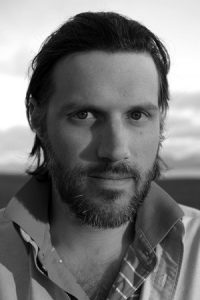 Brett Culbert (PhD ’21) studies the history of the North American landscape and built environment, from 1750-1900. His research focuses on the visual and literary history of landscape routes, especially the projection of travelers’ views into unfamiliar environments. Past projects have explored: the visualization of overland travel through Mormon accounts of the Great Basin, navigational sounding leads and the practice of wayfinding along the North Atlantic coastline, Sir Humphrey Gilbert’s settlement of England’s first overseas colony, in Newfoundland, and Alfred Watkins’ landscape photography along the Wye River Valley.
Brett Culbert (PhD ’21) studies the history of the North American landscape and built environment, from 1750-1900. His research focuses on the visual and literary history of landscape routes, especially the projection of travelers’ views into unfamiliar environments. Past projects have explored: the visualization of overland travel through Mormon accounts of the Great Basin, navigational sounding leads and the practice of wayfinding along the North Atlantic coastline, Sir Humphrey Gilbert’s settlement of England’s first overseas colony, in Newfoundland, and Alfred Watkins’ landscape photography along the Wye River Valley.
Brett is from Rhode Island and prior to pursuing his PhD he received a Bachelors of Architecture degree from Cornell University (2004) and a Masters with Distinction from the Graduate School of Design at Harvard (2011). His Master’s thesis: “The Nascent Picturesque: Visualizing Wilderness and Industry in the New World” was based on a close reading of Thomas Pownall’s Topographical Description, a document that describes the inland expanse of British North America in the mid-eighteenth century. This work focused on the statesman’s observations of an emergent American civilization; especially the native industrial pursuits that bound settlers to the land, forming a social contract between industry, nature and society.
[email protected]
brettculbert.com
 John Davis (PhD ’18) studies the North American built environment and landscape, particularly the effects of technology and engineering systems on landscapes and ecological regions. His dissertation is a historical analysis of the U.S. government’s evolving relationship with nature, focusing on the United States Army Corps of Engineers and the construction of public works, and the technological communities that supported them, in the Reconstruction Era. His work has been supported by fellowships from the Dumbarton Oaks Research Library and Collection and the Charles Warren Center for the Study of American History.
John Davis (PhD ’18) studies the North American built environment and landscape, particularly the effects of technology and engineering systems on landscapes and ecological regions. His dissertation is a historical analysis of the U.S. government’s evolving relationship with nature, focusing on the United States Army Corps of Engineers and the construction of public works, and the technological communities that supported them, in the Reconstruction Era. His work has been supported by fellowships from the Dumbarton Oaks Research Library and Collection and the Charles Warren Center for the Study of American History.
His ongoing research interests include early modern surveying and cartography, historical coastal reclamation practices, infrastructure design and construction in extreme environments, the effects of militarization of landscapes, nature and aesthetics in the early American republic, literature and constructed landscapes, and more generally, the relationship between design, construction, and environment in the modern Americas. He recently published several articles on engineering and environmental policy, and a digital atlas of water infrastructure in the Potomac Valley. In addition to his dissertation, he is currently at work on an article about military geometry and continental-scale diagrams, and a documentary film about marshlands in Massachusetts. He was born in New York City and holds a BS from the University of Virginia and a Master in Architecture with Distinction from Harvard University.
[email protected]
johndeandavis.com
 Natalia Escobar Castrillón (PhD ’20) is a Spanish architect and instructor. She received her Advanced Masters in Design Studies in Critical Conservation with distinction from the Harvard Graduate School of Design (GSD), and her M.Arch with honors from the Universidad de Sevilla. Her research and teaching interests are in modern and contemporary architecture theory and practice, historiography, and architectural conservation and she has been a Visiting Professor at Boston University, Universidade de Sao Paulo (FAUSP), and Pontificia Universidad Catolica de Chile.
Natalia Escobar Castrillón (PhD ’20) is a Spanish architect and instructor. She received her Advanced Masters in Design Studies in Critical Conservation with distinction from the Harvard Graduate School of Design (GSD), and her M.Arch with honors from the Universidad de Sevilla. Her research and teaching interests are in modern and contemporary architecture theory and practice, historiography, and architectural conservation and she has been a Visiting Professor at Boston University, Universidade de Sao Paulo (FAUSP), and Pontificia Universidad Catolica de Chile.
Her dissertation and research work delves into the ideological dimension of architectural conservation, and strives to develop a socially inclusive approach to the field by using the tools of architecture and the philosophy of history and memory. Her research project has been funded by the prestigious TALENTIA grant from the Spanish Ministry of Education, the Jorge Paulo Lemann Foundation, the David Rockefeller Foundation, and the Harvard Asia Center, among others. These grants have allowed her to pursue fieldwork in Brazil, Latin America, and China, respectively.
In 2016, Natalia was hired as the head professor for the graduate core course on architectural conservation theory at the Harvard GSD. During that appointment, she had a crucial role in developing an inclusive and international curriculum for the Critical Conservation program along with its founders, Profs. Michael Hays and Rahul Mehrotra. She is also the founder and editor in chief of the Harvard based publication OBL/QUE, an online journal on architectural conservation that gathers innovative interpretations of architectural projects located around the world. The publication received the Haskell Award from the AIA New York Center for Architecture in 2017.
[email protected]
nataliaescobar.es
 Igor Ekštajn (PhD ’23) studies how the understanding of nature has played a dynamic role in the planning and organization practices of the European southeast in the nineteenth and twentieth centuries.
Igor Ekštajn (PhD ’23) studies how the understanding of nature has played a dynamic role in the planning and organization practices of the European southeast in the nineteenth and twentieth centuries.
He received a Master of Architecture from the University of Zagreb (2005) and worked in a number of Croatian architectural offices. He also holds a Master in Design Studies in History and Philosophy of Design from the Harvard GSD (2011), and a Master of Arts in Landscape Architecture from Harvard Griffin GSAS (2013).
Igor has experience in curatorial practice, having worked for both the Peggy Guggenheim Collection in Venice and the GSD’s Exhibition Department. He served, moreover, as the Deputy Curator of the Croatian Pavilion at the 14th Venice Architecture Biennale, and as a member of the research and curatorial team for “Urban Intermedia: City, Archive, Narrative”- a travelling exhibition of the Harvard-Mellon Urban Initiative, where he was also a Research Fellow.
He is a Graduate Student Affiliate of the Harvard University Center for European Studies and of the Weatherhead Center for International Affairs. Igor’s doctoral research has been supported by fellowships from the Konrad Adenauer Foundation and from the Krupp Foundation.
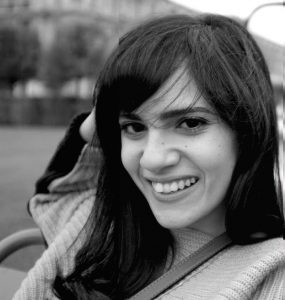 Samaa Elimam (PhD ’23) examines the links between engineering methods and the technical production of the past in the Nile Valley, with a focus on the relationship between Egypt and the Sudan. Previous research has explored rival conceptions of technical knowledge, including early nineteenth century ideas of public utility, optimization, and aesthetic discourse in the design of public works. Samaa completed her Masters in Architecture with distinction from the Harvard Graduate School of Design, where her thesis in the New Geographies Lab explored modern Mediterranean environmental history, particularly infrastructural networks in the Nile Delta. She has a Bachelor of Arts in Architecture with highest honors from the University of California, Berkeley.
Samaa Elimam (PhD ’23) examines the links between engineering methods and the technical production of the past in the Nile Valley, with a focus on the relationship between Egypt and the Sudan. Previous research has explored rival conceptions of technical knowledge, including early nineteenth century ideas of public utility, optimization, and aesthetic discourse in the design of public works. Samaa completed her Masters in Architecture with distinction from the Harvard Graduate School of Design, where her thesis in the New Geographies Lab explored modern Mediterranean environmental history, particularly infrastructural networks in the Nile Delta. She has a Bachelor of Arts in Architecture with highest honors from the University of California, Berkeley.
Before her PhD, Samaa worked as an architectural designer at offices in Los Angeles, San Francisco, and Cairo, and later, a visiting studio instructor at the American University in Cairo. Her dissertation research has been supported by fellowships from the Society for the History of Technology, the American Research Center in Egypt, the Harvard Kenneth C. Griffin Graduate School of Arts and Sciences, and the Canadian Centre for Architecture.
 Brandon Finn (PhD ’22) studies urbanization, extraction, labor, democracy, and race in Southern and Central Africa. He has published six peer-reviewed articles in journals including: Dialogues in Human Geography, Urban Geography, and Environment and Planning C: Politics and Space. His most recent article is titled ‘Pandemic Urbanization: How South Africa’s History of Labor and Disease Control Create its Current Disparities,’ which is currently in press at the Journal of Urban Affairs. Brandon is currently writing a paper on the history of urbanization and the informal economy in the Zambian Copperbelt.
Brandon Finn (PhD ’22) studies urbanization, extraction, labor, democracy, and race in Southern and Central Africa. He has published six peer-reviewed articles in journals including: Dialogues in Human Geography, Urban Geography, and Environment and Planning C: Politics and Space. His most recent article is titled ‘Pandemic Urbanization: How South Africa’s History of Labor and Disease Control Create its Current Disparities,’ which is currently in press at the Journal of Urban Affairs. Brandon is currently writing a paper on the history of urbanization and the informal economy in the Zambian Copperbelt.
His research uses qualitative and archival methodologies and is broadly interested in Africa’s relation to the global history of urbanization and capitalism. Brandon is committed to a comparative approach to urban studies in both his research and teaching. This approach sees African and American urban history, theory, and practice informing each other.
Brandon earned his master’s degree in Urban Studies from University College London and his undergraduate and honors degrees from the University of Cape Town. He has conducted fieldwork in Sierra Leone, Rwanda, the Democratic Republic of Congo, and Zimbabwe, and worked for the African Centre for Cities. He is currently a visiting scholar at the Center for Political Studies at the Institute for Social Research at the University of Michigan, where he is also conducting work for the African Studies Center.
Brandon’s has received fellowships and funding from: The International Journal of Urban and Regional Research; The American Association of Geographers; The Graham Foundation; The Weatherhead Center for International Affairs; Harvard University’s Graduate School of Design; and was recently awarded a Dissertation Completion Fellowship by the Graduate School of Arts and Sciences.
 Matthew Gin (PhD ’20) is from San Francisco and studies architecture and urbanism in the 18th and 19th centuries. He dissertation, “The Politics of Pageantry: Dynasticism, Diplomacy, and Ephemeral Festival Architecture in France, 1729-1763,” examines the temporary structures erected for public celebrations of royal births, marriages, and military victories during the reign of Louis XV. His other ongoing research interests include the repurposing of building materials in the early modern period, the politics of architectural patronage, and the spatial aspects of diplomatic ceremonial.
Matthew Gin (PhD ’20) is from San Francisco and studies architecture and urbanism in the 18th and 19th centuries. He dissertation, “The Politics of Pageantry: Dynasticism, Diplomacy, and Ephemeral Festival Architecture in France, 1729-1763,” examines the temporary structures erected for public celebrations of royal births, marriages, and military victories during the reign of Louis XV. His other ongoing research interests include the repurposing of building materials in the early modern period, the politics of architectural patronage, and the spatial aspects of diplomatic ceremonial.
He has a BA (Art History) and a BMus (Baroque Flute Performance) from Oberlin College, an MED (Architectural History) from Yale University, and an AM (Architecture) from Harvard University. His research has received generous support from the Canadian Centre for Architecture, Dumbarton Oaks, the Minda de Gunzburg Center for European Studies, and the UCLA Center for 17th- and 18th– Century Studies. Prior to Harvard, he worked for the Frank Lloyd Wright Trust and the Department of Architecture and Design at MoMA.
 Lisa Haber-Thomson (PhD ’19) studies Architectural History and Theory. Her research explores the relationships between territory, law, and architecture. She has completed her dissertation, Territories of incarceration: architecture and judicial procedure across the English Channel, 1642-1945. Her past work has examined the legal significance of a variety of architectural structures, and has ranged from an analysis of the use of watermills in medieval property disputes, to a study of the contemporary usages of Maginot Line casemates in eastern France. Lisa has been the recipient of the Julia A. Appleton Traveling Fellowship in Architecture, and the Frederick Sheldon Fund Traveling Fellowship. Additional support for her research has been awarded by the Soane Foundation and the Paul Mellon Centre for Studies in British Art.
Lisa Haber-Thomson (PhD ’19) studies Architectural History and Theory. Her research explores the relationships between territory, law, and architecture. She has completed her dissertation, Territories of incarceration: architecture and judicial procedure across the English Channel, 1642-1945. Her past work has examined the legal significance of a variety of architectural structures, and has ranged from an analysis of the use of watermills in medieval property disputes, to a study of the contemporary usages of Maginot Line casemates in eastern France. Lisa has been the recipient of the Julia A. Appleton Traveling Fellowship in Architecture, and the Frederick Sheldon Fund Traveling Fellowship. Additional support for her research has been awarded by the Soane Foundation and the Paul Mellon Centre for Studies in British Art.
Lisa has a Masters in Architecture from the Harvard Graduate School of Design, and a Bachelor of Arts in Visual and Environmental Studies from Harvard University. Prior to beginning her PhD program, Lisa worked as an intern architect at Ateliers Jean Nouvel; as a video and sound editor for the Science Media Group; and as a freelance animator and sound designer. Continuing work in educational video production includes the design and implementation of the forthcoming online course, The Architectural Imagination, a co-production of HarvardX and the GSD.
[email protected]
lisahaberthomson.com
 Thomas Shay Hill (PhD ’22) is a computer scientist, economic historian, and scholar of urban development patterns. His doctoral research explores the interactions between markets, information, and financial speculation in the urban development process. Tommy is particularly interested in the role of statistical analysis, forecasting, and economic modeling in shaping urban development patterns, from the early 20th Century to the digital age. Tommy’s interests include housing affordability, urban and architectural obsolescence, and the social and civic implications of urban development booms and busts.
Thomas Shay Hill (PhD ’22) is a computer scientist, economic historian, and scholar of urban development patterns. His doctoral research explores the interactions between markets, information, and financial speculation in the urban development process. Tommy is particularly interested in the role of statistical analysis, forecasting, and economic modeling in shaping urban development patterns, from the early 20th Century to the digital age. Tommy’s interests include housing affordability, urban and architectural obsolescence, and the social and civic implications of urban development booms and busts.
Tommy is a doctoral fellow with the Harvard Mellon Urban Initiative and a John R. Meyer Dissertation Fellow at the Harvard Joint Center for Housing Studies. Tommy’s dissertation research has been supported by the Canadian Centre for Architecture, the Richard Rogers Fellowship, and the Harvard Graduate Society. Tommy holds a Master’s of Science in Computational Science and Engineering from Harvard’s John A. Paulson School of Engineering and Applied Sciences and a Bachelors of Arts in Urban Studies from Columbia University. Tommy’s writing has been published in the Journal of Urban History, Environmental Research Letters, the Routledge anthology Architecture and the Smart City, and the Urban History Association’s blog Metropole.
 Jacobé Huet’s (PhD ’22) dissertation explores the visual, historical, and political connections of European modernism with vernacular traditions of the Mediterranean. She examines these overlaps in the context of three architects’ careers—Adolf Loos, Marcel Breuer, and Le Corbusier—as well as three cities—Tel Aviv, Algiers, and Marseille.
Jacobé Huet’s (PhD ’22) dissertation explores the visual, historical, and political connections of European modernism with vernacular traditions of the Mediterranean. She examines these overlaps in the context of three architects’ careers—Adolf Loos, Marcel Breuer, and Le Corbusier—as well as three cities—Tel Aviv, Algiers, and Marseille.
In 2021, one of her dissertation chapters was published as a peer-reviewed article in the 38th issue of Muqarnas: An Annual on the Visual Cultures of the Islamic World. She wrote this article titled “Prospective and Retrospective: Le Corbusier’s Twofold Voyage d’Orient” after spending a summer researching in the archives of the Fondation Le Corbusier. Based on a new reading of the last manuscript of Le Corbusier’s book Le Voyage d’Orient, this article demonstrates how the architect re-wrote a segment of his own history, especially in relation to his ideas of modernity, tradition, inspiration, and attachment to Mediterranean architecture.
Before enrolling at Harvard, she received a bachelor’s degree in art history from Université Paris 1 Panthéon Sorbonne and a master’s degree from Williams College and the Clark Art Institute. Her doctoral project has been supported by several research centers at Harvard and beyond, including the Aga Khan Program for Islamic Architecture, the Center for European Studies, the Center for Jewish Studies, the Weatherhead Center for International Affairs, and the Fondation Palladio.

Manuel López Segura (PhD ’22) is an architect with a Master’s in architectural history. His research in the GSD MDes program focused on the involvement of architecture in the construction of Spain’s democracy, welfare state, and regional identities during the 1980s. He has enjoyed the support of a Fulbright Scholarship. He is the recipient of a 2018-2020 La Caixa Scholarship. As a PhD student, he works on the architecture of political conflict in 1950s to 1970s Italy. He has published in peer-reviewed journals and has presented at the annual conferences of the European Architectural History Network, the Society of Architectural Historians, the Society of Architectural Historians of Great Britain, and the Anglo-Catalan Society, as well as at Yale University and other fora.
Manuel holds a professional degree in architecture from the Polytechnic University of València, Spain, an MA in Architectural History from The Bartlett, University College London, and an MDes History & Philosophy of Design from the GSD. Manuel knows French, Spanish, Italian, Catalan, and some German. He has served as a teaching assistant to Professors Rafael Moneo and Hashim Sarkis and as a teaching fellow in the courses BTC I, BTC III, and Theories of Landscape Architecture at the GSD, and Landmarks of World Architecture at FAS.
 Morgan Ng (PhD ’18) studies the interplay between architecture, visual culture, and the technical sciences in early modern Europe, with a particular emphasis on Renaissance Italy. His dissertation examined how developments in military architecture transformed the design and experience of sixteenth-century buildings, gardens, and cities. This project benefited from the resources and financial support of the Bibliotheca Hertziana, Samuel H. Kress Foundation, Villa I Tatti, Medici Archive Project, Andrew W. Mellon Foundation, and Getty Research Institute.
Morgan Ng (PhD ’18) studies the interplay between architecture, visual culture, and the technical sciences in early modern Europe, with a particular emphasis on Renaissance Italy. His dissertation examined how developments in military architecture transformed the design and experience of sixteenth-century buildings, gardens, and cities. This project benefited from the resources and financial support of the Bibliotheca Hertziana, Samuel H. Kress Foundation, Villa I Tatti, Medici Archive Project, Andrew W. Mellon Foundation, and Getty Research Institute.
Morgan’s articles appear in the journals Art History, Word & Image, Mitteilungen des Kunsthistorischen Institutes in Florenz, and Journal of Medieval and Early Modern Studies. Topics addressed in these essays include the aesthetics of Psalm-singing in Huguenot-occupied churches and towns; the influence of Calvinist cartography on John Milton’s poetry; and the cultural ecology of colorless window glass in late-Renaissance secular architecture. Forthcoming writings will also be featured in edited volumes on Renaissance drawing, sculpture, and landscape architecture.
Before beginning his graduate studies, Morgan completed his Bachelor of Architecture at Cornell University, and worked as an architectural designer in New York and Chicago.
[email protected]
morganng.com
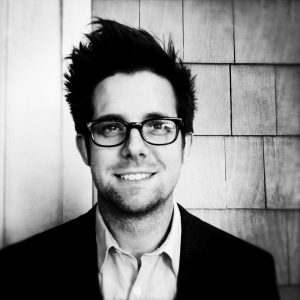 Bryan E. Norwood (PhD ’18) earned his PhD at Harvard University and was a visiting assistant professor at the Mississippi State University School of Architecture. He was the 2016-2017 Charles E. Peterson Senior Fellow at the Athenaeum of Philadelphia. His dissertation, entitled “The Architect’s Knowledge: Imagining the Profession’s Historical Body, 1797-1877,” is a study of the development of professionalized architectural knowledge through the formalization of architectural education in nineteenth-century America. Focusing on the key role the conceptualization of architectural history played in the formation of the discipline and profession, Bryan’s dissertation explores the ethics of architecture’s relation to its own past.
Bryan E. Norwood (PhD ’18) earned his PhD at Harvard University and was a visiting assistant professor at the Mississippi State University School of Architecture. He was the 2016-2017 Charles E. Peterson Senior Fellow at the Athenaeum of Philadelphia. His dissertation, entitled “The Architect’s Knowledge: Imagining the Profession’s Historical Body, 1797-1877,” is a study of the development of professionalized architectural knowledge through the formalization of architectural education in nineteenth-century America. Focusing on the key role the conceptualization of architectural history played in the formation of the discipline and profession, Bryan’s dissertation explores the ethics of architecture’s relation to its own past.
Bryan previously received a BA in philosophy and a BArch from Mississippi State University, an MA in philosophy from Boston University, and an AM in architecture from Harvard. He has taught courses at the GSD, Northeastern University, and Boston University. In addition to his dissertation, Bryan’s recent research includes the architectural implications of phenomenology, the history of flood control on the Mississippi River, mid-century modern architecture in Boston, speculative realism and object-oriented ontology, and the architectural historiography of plantation houses in the Lower Mississippi Valley. His writing has appeared in Philosophical Forum, Harvard Design Magazine, Culture Machine, Log, and MONU, as well as several collected volumes.
[email protected]
bryannorwood.me
 Sabrina Osmany (PhD ’23) researches developing Deep Generative Models of Artificial Imagination. She is co-advised between Harvard and MIT working in collaboration with Isola lab at MIT-CSAIL.
Sabrina Osmany (PhD ’23) researches developing Deep Generative Models of Artificial Imagination. She is co-advised between Harvard and MIT working in collaboration with Isola lab at MIT-CSAIL.
Sabrina’s research combines machine learning with cognitive linguistics, and cognitive neuroscience of human visuospatial reasoning, in an effort to lay the foundations for machines that are capable of human-like generative capacities such as imagination and creativity. Her work builds on models of Conceptual Exploration which integrates language as a fundamental component of the cognitive experience. Sabrina uses these language insights to train machines that can perform tasks such as abstract thinking, cross-modal reasoning, concept transfer and concept invention, which is the immanent frontier towards Artificial General Intelligence.
Sabrina’s research draws from key insights from research on Mental Spaces suggesting how humans choose to represent concepts frames the choices they make during in subsequent spatial reasoning tasks. As such, representations instantiate frame consistent choice architectures. This means that representations can both reduce or expand the range of exploration of choice outcome. Nudging literature from Cognitive Psychology has shown that this phenomenon can be used for enhancing decision making in rational choice settings. Sabrina’s work asks how it might also augment the human imagination and creative arts. This has bearings on the nature of agency and intentionality.
Generative Models enable an expansion in our conceptual agency, authority and imagination in the realm of the Arts but also New Ways of Thinking. By forecasting and generating Art Futures, and possible Future Worlds, Sabrina is currently developing generative models for applications in Neural Diversity and Brain Machine Interfaces.
Sabrina holds an M.P.S. from the Interactive Telecommunications Program at NYU where her research explored how human agency and intentionality are mediated by the design of interactive systems, focusing on the the development of intelligent virtual environments that sense, decode, and mediate human choice making behavior.
In collaboration with NYU’s Center for Neural Science, Sabrina developed her thesis, the Human Avatar Project, an anatomical, 27 degree-of-freedom upper-limb simulation to aid Pesaran lab’s research in brain-machine interfaces for robotic prosthetics.
Her interactive work includes the development of a programming language in Urdu, a mobile app that uses computer vision to identify and connect with network devices, and a 120 ft. video installation at InterActiveCorp headquarters in New York City. She has exhibited Computational Art work internationally and maintains a vibrant artistic practice alongside her research.
Sabrina studied Philosophy at Bard College, completing a thesis, The Stature of Man in the Age of Creative Machines, which explored the cybernetic implications on of machines surpassing human creative intelligence. She is a mentor for OpenAI Scholars Program and currently serves on the board of the Hannah Arendt Center for Politics and Humanities at Bard College. Sabrina is from Karachi, Pakistan.
[email protected]
sabrina-osmany.com

Melany Sun-Min Park (PhD ’20) specializes in the history of architecture in 20th-century East Asia and the global formations of modernism in visual culture and design. Her dissertation, “From the Truss to the Dome: Architecture as Modern Science in Postwar Korea, 1953-1978,” is an interrelated investigation of architectural knowledge, cultural nationalism, and techno-scientific development in postwar South Korea. It follows the transnational transfer of knowledge and expertise that took place in the wake of the Korean War (1950-1953), a period when colonial forms of institutional training confronted the Cold War technocratic culture.
At the 2020 Society of Architectural Historians Annual Conference in Seattle, Melany will be co-chairing the panel, “The Magnitude of Architecture.” In the summer of 2019, she received a Pforzheimer Fellowship at the Harvard Business School to conduct research on the American photographer Ansel Adams and his consultancy for the Polaroid corporation. In 2017, Melany helped coordinate a GSD centenary symposium celebrating the work and life of I.M. Pei.
Melany received an MDes from the Harvard Graduate School of Design (GSD), where she was awarded the Gerald M. McCue Medal. She also holds a MArch from National University of Singapore and a MA in Art Business from Sotheby’s Institute of Art. Her writings have appeared in the Journal of Architecture, Architectural Review, and Singapore Architect (SA). She is currently working on an essay on the construction of Korean fertilizer complexes for Aggregate’s book project, Systems and the South. Melany’s research has received generous support from the following institutions: Harvard Korea Institute, Harvard Asia Center, Society of Architectural Historians, and Canadian Center for Architecture.
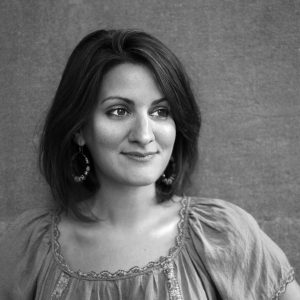 Marianne F. Potvin (PhD ’19) studied the intersection of humanitarian action and urban planning. Her research, entitled “Humanitarian Urbanism: Cities, Technology and the Hybrid Practices of Humanitarian Actors,” draws on urban theory, and science, technology, and society studies (STS) to explore the evolution of international aid organizations’ approaches to space and physical planning. Her work has been supported by the Weatherhead Center for International Affairs (2016/19) and the Harvard Edmond J. Safra Center for Ethics (2017/18).
Marianne F. Potvin (PhD ’19) studied the intersection of humanitarian action and urban planning. Her research, entitled “Humanitarian Urbanism: Cities, Technology and the Hybrid Practices of Humanitarian Actors,” draws on urban theory, and science, technology, and society studies (STS) to explore the evolution of international aid organizations’ approaches to space and physical planning. Her work has been supported by the Weatherhead Center for International Affairs (2016/19) and the Harvard Edmond J. Safra Center for Ethics (2017/18).
Prior to Harvard, Marianne led field teams in Iraq, Afghanistan and Darfur, for the International Committee of the Red Cross (ICRC) and other NGOs to support refugees and victims of armed conflicts. In Kabul, she co-chaired the UNHCR Shelter Cluster’s Technical Group, and advised the Kabul Municipality on urban response strategies (2010). Her recent fieldwork focuses on the role of aid agencies in responding to the Syrian Refugee Crisis in Lebanese cities.
She teaches a graduate seminar on the theories of practice in crisis, conflict and recovery. She has written about urban resilience and the ethics of crisis mapping, and contributed to forums such as the UN-Habitat Informal Urbanism Hub, the OpenDemocracy.net’s Cities in Conflict Series, and the Design for Humanity Initiative.
 Etien Santiago (PhD ’21) is a licensed architect who investigates the impact of new technologies on architecture and society. His areas of expertise are architectural history and theory from the nineteenth century to the present, the use of industrial materials in modern architecture, and conceptualizations of machine and digital culture.
Etien Santiago (PhD ’21) is a licensed architect who investigates the impact of new technologies on architecture and society. His areas of expertise are architectural history and theory from the nineteenth century to the present, the use of industrial materials in modern architecture, and conceptualizations of machine and digital culture.
Prior to starting a PhD, Etien worked as an architect for firms such as the Renzo Piano Building Workshop. He holds an M.Arch. with distinction from the Harvard Graduate School of Design as well as a B.Arch. and B.A. cum laude from Rice University. His M.Arch. thesis was awarded the James Templeton Kelley Prize, and his undergraduate work received recognitions including the AIA School Medal, the Rice Visionary Project in Architecture Award, and the Louis Sudler Prize in the Arts.
His dissertation uncovers how the cultural and intellectual context of World War I shaped architects’ appropriation of innovative military construction techniques, from which they sought to create new forms of affordable housing. This research has been supported by grants from the Canadian Centre for Architecture, the Harvard Center for European Studies, and the Weatherhead Center for International Affairs.
Etien currently teaches at the Indiana University J. Irwin Miller Architecture Program based in Columbus, Indiana. He received a Distinction in Teaching Award from the Derek Bok Center for Teaching and Learning for a prior role as a Harvard Teaching Fellow.
[email protected]
etiensantiago.com
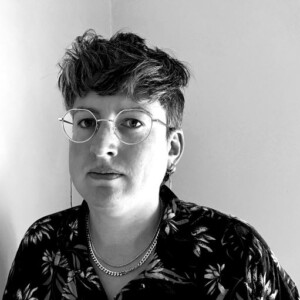 Christina Shivers (PhD ’23) studied the rise of market-based environmental policies since the 1970s through researching the history of surface-mined land reclamation programs in Canada and the United States. Specifically, she looks to the influence of ecological and economic thought on the planning and design of formerly mined sites in order to understand the ways in which reclamation research influenced environmental policy at the national and international scales.
Christina Shivers (PhD ’23) studied the rise of market-based environmental policies since the 1970s through researching the history of surface-mined land reclamation programs in Canada and the United States. Specifically, she looks to the influence of ecological and economic thought on the planning and design of formerly mined sites in order to understand the ways in which reclamation research influenced environmental policy at the national and international scales.
Christina was a Graduate Student Affiliate and Graduate Research Fellow at the Weatherhead Center for International Affairs Canada Program, and is the recipient of the Weatherhead Center’s Dissertation Writing Grant for the 2021-22 academic year. She was previously the recipient of the Warren Center for Studies in American History Term-Time Dissertation Research Grant in 2020. Christina was a participant in the Garden and Landscape Studies Graduate Student Workshop at Dumbarton Oaks in the summer of 2020 and was a doctoral fellow at the Canadian Center for Architecture in Montreal in 2019. She has presented her work at a number of venues including the 2021 New England Society of Architectural Historians annual conference, the 2021 HAUS PhD Symposium at Cornell University, 2019 Annual Conference for the Society for American City and Regional Planning History, the Society of Architectural Historians 2018 International Conference in Minneapolis, the Berlin Unlimited Urban Arts Festival in Berlin, Germany, the AIA Washington D.C. Emerging Architects Thesis Showcase and has been published in MAS Context.
Christina is also a visual artist and electronic musician. She was previously awarded the AIA Atlanta Emerging Voices Award in 2016 and presented an exhibition entitled Contrapuntal Narratives: Architectural Drawing Machines for Atlanta. She has also exhibited her artistic work at Harvard Graduate School of Design’s fortyK Gallery, at Kennesaw State University in Georgia, and recently installed a sculpture at the Nashville International Airport. She is also an electronic musician and performs regularly in New England.
 Justin D. Stern (PhD ’19) studies the interplay of economic development and city planning in rapidly urbanizing regions in East and Southeast Asia. His dissertation looks at how business process outsourcing or “offshoring” is driving new patterns of urban development with particular focus on India and the Philippines.
Justin D. Stern (PhD ’19) studies the interplay of economic development and city planning in rapidly urbanizing regions in East and Southeast Asia. His dissertation looks at how business process outsourcing or “offshoring” is driving new patterns of urban development with particular focus on India and the Philippines.
Questions addressed in Justin’s research include: In what ways do the contemporary urban forms of cities in Asia, and their dominant building typologies, reflect the economic and political restructuring of the previous half century? What role do large-scale, diversified corporate conglomerates, such as Samsung Group in Korea and Ayala Corporation in the Philippines, play in urban development? And how can the experience of Seoul and other cities in East Asia, as inductive role models, better inform rapidly developing regions in Southeast Asia and beyond?
Justin holds a Master of Urban Planning (MUP) from Harvard University and completed his bachelor’s degree at Sarah Lawrence College and the University of Oxford. During the 2012-2013 academic year, Justin served as a Fulbright Fellow in Seoul, South Korea and was the recipient of a Harvard-Frederick Sheldon Traveling Fellowship. He is currently a Graduate Student Associate at the Harvard Asia Center and the Weatherhead Center for International Affairs. Justin is a four-time recipient of the Derek-Bok Center Certificate in Teaching Excellence. Prior to enrolling at Harvard, Justin worked in the international development arena and in affordable housing development in New York City.
[email protected]
justindstern.com
 Adam Tanaka (PhD ’18) studies urban planning with a particular focus on affordable housing and real estate development. His research interests lie at the confluence of urban history, political science and business studies. His writings on cities have been published by Slate, Van Alen, the Harvard Joint Center for Housing Studies, the Gotham Center for New York City History, the Harvard Real Estate Review, Archi-DOCT, and Failed Architecture, among others.
Adam Tanaka (PhD ’18) studies urban planning with a particular focus on affordable housing and real estate development. His research interests lie at the confluence of urban history, political science and business studies. His writings on cities have been published by Slate, Van Alen, the Harvard Joint Center for Housing Studies, the Gotham Center for New York City History, the Harvard Real Estate Review, Archi-DOCT, and Failed Architecture, among others.
During the 2017-2018 academic year, Adam completed his dissertation on large-scale, middle-income housing in New York City. Offering a counterpoint to familiar narratives of post-war suburbanization and central city disinvestment, the dissertation analyzes a number of vast planned communities built for middle class New Yorkers from the 1940s through 1970s. The dissertation investigates the political and financial alliances that facilitated these projects – many of which remain the largest of their kind in the world – as well as the factors that abruptly terminated this “large-scale approach” in the mid-1970s.
Adam received a BA in art history and urban studies from Princeton University and an AM in Urban Planning from Harvard. He has held fellowships from the Harvard Joint Center for Housing Studies and the Radcliffe Institute for Advanced Study, and in 2015-2016 he was a visiting scholar at the NYU Furman Center for Real Estate and Urban Policy. Over the course of his doctoral studies, he has also worked for a variety of New York City agencies on affordable housing, public finance and land use-related matters.
Adam has also been closely involved in the development of the Harvard Summer School course, “Biology and the Evolution of Paris as a Smart City,” a partnership program between the City of Paris, Harvard, SciencesPo, and the Center for Research and Interdisciplinarity. The course, now in its third year, mentors interdisciplinary, international student teams in the development of innovative solutions to urban problems in Paris, France.
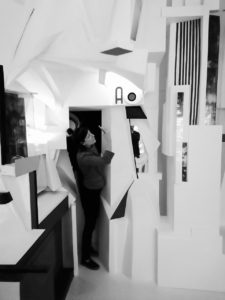 Rodanthi Vardouli (PhD ’22) is an architect and architectural theorist whose work centers on the phenomenon of the avant-garde in the Arts. Her doctoral work, supervised by Professor K Michael Hays, positions the artistic and architectural production of the early twentieth century avant-garde in Europe (with greater focus on Dada and Surrealism) in relation to emerging theories of performance and performativity in the humanities, with the aim to unveil its constructive potential. Currently a PhD candidate, her dissertation proposes a theory of the avant-garde centered around a notion of agonistic negativity that goes beyond subversive intent and embraces an attitude of revolt within a world perceived in negative terms and therefore irreducible to dialectical antithesis.
Rodanthi Vardouli (PhD ’22) is an architect and architectural theorist whose work centers on the phenomenon of the avant-garde in the Arts. Her doctoral work, supervised by Professor K Michael Hays, positions the artistic and architectural production of the early twentieth century avant-garde in Europe (with greater focus on Dada and Surrealism) in relation to emerging theories of performance and performativity in the humanities, with the aim to unveil its constructive potential. Currently a PhD candidate, her dissertation proposes a theory of the avant-garde centered around a notion of agonistic negativity that goes beyond subversive intent and embraces an attitude of revolt within a world perceived in negative terms and therefore irreducible to dialectical antithesis.
To pursue this line of inquiry, Rodanthi has–over her years at Harvard–experimented with multiple epistemological perspectives and disciplinary methods of knowledge production that range from archival research oriented toward the production of chronicles and historical accounts (History of Art and Architecture) to poetics (Comparative Literature) and the contemporary discourse on architectural production (Graduate School of Design). She has presented her work at conferences and symposia across the world, including the “Disrupting Narratives: New Perspectives on Collage” Symposium at the University of Edinburgh (7/2019), the Field Studies Colloquium at Princeton SA+P (3/2019) the New England Symposium of Architectural Historians at the MIT Dept of Architecture (4/2018), the Panaesthetics Colloquium at Harvard GSAS (2/2017), the MIT Architecture Studies Faculty Colloquium lecture series (11/2014). Rodanthi is also a frequent invited speaker at the Discourse and Methods graduate seminar taught by Mark Goulthorpe at MIT (2014-2019.)
Prior to Harvard, Rodanthi received a Master of Science in Architecture Studies from the MIT Department of Architecture (SMArchS 2014), where she conducted joint research between the History Theory Criticism and the Architectural Design areas of study, as scholar of the Fulbright Greece, Alexander S. Onassis and A.G. Leventis Foundations. For her research at MIT, she was awarded the Arthur Rotch Special Prize for highest academic achievement and original contributions to more than one research fields. Articles based on her MIT thesis were published at the Kurt Schwitters Society annual journal (2014) and the “Research in Architecture” journal edition of the National Technical University of Athens (2016). Rodanthi also holds a Professional Diploma in Architectural Engineering and a Graduate Specialization Diploma from the Design-Space-Culture Interdepartmental Graduate Program at the NTUA.
 Demetra Vogiatzaki (PhD ’23) is a historian of eighteenth-century architecture working on the intersection of virtual and material spaces in early modern Europe, with a particular focus in the French Enlightenment. She is currently completing her doctoral dissertation ‘On Marvels and Stones: Dreams, Virtuality, and Space in Late Eighteenth-Century France’, part of which was conducted in collaboration with the French literature department at Sorbonne, where she served as an HSS Chateaubriand Fellow. For her research, Demetra has received generous support from Harvard, UCLA, the French Embassy in the United States, and the Canadian Center of Architecture, among others. Her broader interests include the politics of early modern imagination, eighteenth-century environmentalism, and Eastern Mediterranean religious and diplomatic mediations in the Enlightenment.
Demetra Vogiatzaki (PhD ’23) is a historian of eighteenth-century architecture working on the intersection of virtual and material spaces in early modern Europe, with a particular focus in the French Enlightenment. She is currently completing her doctoral dissertation ‘On Marvels and Stones: Dreams, Virtuality, and Space in Late Eighteenth-Century France’, part of which was conducted in collaboration with the French literature department at Sorbonne, where she served as an HSS Chateaubriand Fellow. For her research, Demetra has received generous support from Harvard, UCLA, the French Embassy in the United States, and the Canadian Center of Architecture, among others. Her broader interests include the politics of early modern imagination, eighteenth-century environmentalism, and Eastern Mediterranean religious and diplomatic mediations in the Enlightenment.
Demetra is co-chairing the ASECS (American Society of Eighteenth-Century Studies) sponsored panel at the CAA 2023 conference, and is part of the organizing committee for the upcoming EAHN (European Architectural History Network) conference to be held in 2024 in Athens, Greece. She has also been an organizer of DocTalks, an inter-institutional platform for presentations by and for PhD students, where she spearheaded ‘DocTalks X MoMA’; a doctoral think tank on environmental research that will launch in Fall 2022, under the auspices of the MoMA Ambasz Institute.
An active member of the Harvard-wide Mental Health Task Force, Demetra represented the GSD in the year-long deliberations of the group, while she also worked closely with Deans Dench and McCavana to formulate concrete proposals for the enhancement of advising structures at the Harvard Kenneth C. Griffin Graduate School of Arts and Sciences. During COVID-19 she had the opportunity to carry this interest into her professional community, volunteering for the HECAA (Historians of Eighteenth-Century Art and Architecture) DEI ‘Resources’ and ‘Mentorship’ committees. Demetra is particularly interested in questions of equity and inclusion and for the past year she has been a member of Queer Space Working Group, joining colleagues from UPenn, Princeton, ETH and RISD, among other institutions.
A licensed architect-engineer in Greece (MA, MSc with excellence from the National Technical University of Athens), Demetra is further interested in design, and curatorial activities. Beyond the academic walls, she has participated in art exhibitions in Paris, Istanbul and Athens, while her work was on display at the 2016 Venice Biennale of Architecture (Greek Pavilion). She enjoys poetry, crime books, and traveling, and is always up to chat about history and theory in the trays.
[email protected]
https://doctalks.net/
 Wei Zhang (PhD ’21) specializes in Architectural Technology. His dissertation research examines natural ventilation and its implementation in green building through data-driven algorithms. It integrates the machine learning algorithm and realizes the smart control of indoor air quality and thermal comfort based on the design of complex system architecture around operable windows and thermal mass. He believes it will contribute to improving the building energy performance through controllable natural ventilation.
Wei Zhang (PhD ’21) specializes in Architectural Technology. His dissertation research examines natural ventilation and its implementation in green building through data-driven algorithms. It integrates the machine learning algorithm and realizes the smart control of indoor air quality and thermal comfort based on the design of complex system architecture around operable windows and thermal mass. He believes it will contribute to improving the building energy performance through controllable natural ventilation.
All his research is demonstrated at the Harvard Center for Green Buildings and Cities (CGBC), which is the frontline zero energy house platform. He is enthusiastic about bringing the natural ventilation design into real-world applications and discussed the concept of controllable natural ventilation during several conferences in the field of architecture and indoor air quality.
Wei holds a Bachelor’s degree in architectural engineering from Southeast University in China. He received a diplôme d’Ingénieur in mechanical engineering and a research master in fluid dynamics from INSA Toulouse. Prior to the Ph.D. program, Wei experienced as a design engineer in an energy infrastructure project in Grenoble and Paris for seven years, and he holds the title of European Engineer. Along with his career, Wei continued to pursue the advanced study in architecture and received a DPEA degree in architecture from ENSA Paris-La Villette (UP6).
Wei maintains a wide range of research interests in historical heritage, architectural theory, and architectural technology. Additionally, he had global integrated research/study experience in energy policy, architectural design, and history, respectively, at the University of Toronto, ETH Zurich, Aarhus School of Architecture, and Université Paris X – Nanterre.